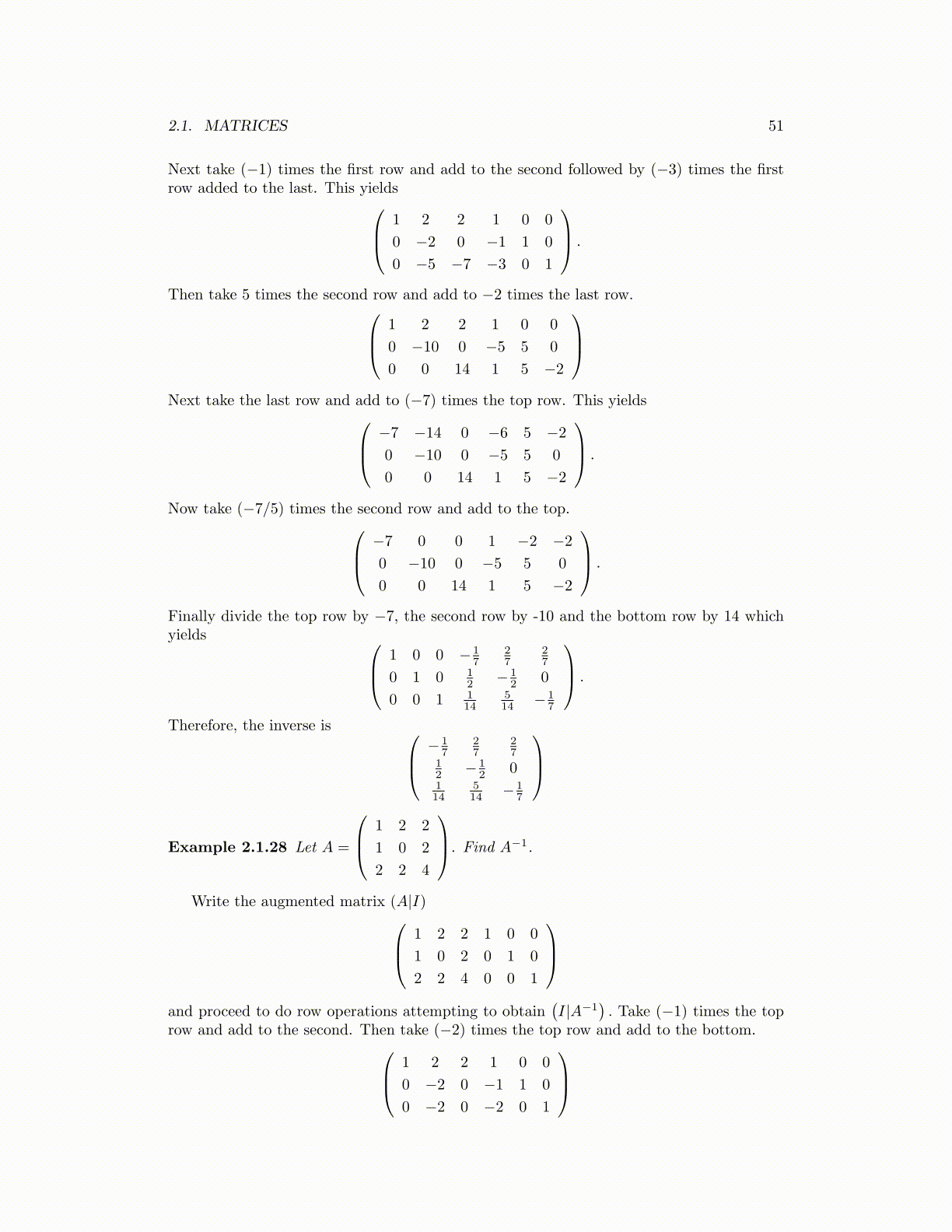
2.1. MATRICES 51
Next take (−1) times the first row and add to the second followed by (−3) times the firstrow added to the last. This yields 1 2 2 1 0 0
0 −2 0 −1 1 0
0 −5 −7 −3 0 1
.
Then take 5 times the second row and add to −2 times the last row. 1 2 2 1 0 0
0 −10 0 −5 5 0
0 0 14 1 5 −2
Next take the last row and add to (−7) times the top row. This yields −7 −14 0 −6 5 −2
0 −10 0 −5 5 0
0 0 14 1 5 −2
.
Now take (−7/5) times the second row and add to the top. −7 0 0 1 −2 −2
0 −10 0 −5 5 0
0 0 14 1 5 −2
.
Finally divide the top row by −7, the second row by -10 and the bottom row by 14 whichyields 1 0 0 − 1
727
27
0 1 0 12 − 1
2 0
0 0 1 114
514 − 1
7
.
Therefore, the inverse is − 17
27
27
12 − 1
2 0114
514 − 1
7
Example 2.1.28 Let A =
1 2 2
1 0 2
2 2 4
. Find A−1.
Write the augmented matrix (A|I) 1 2 2 1 0 0
1 0 2 0 1 0
2 2 4 0 0 1
and proceed to do row operations attempting to obtain
(I|A−1
). Take (−1) times the top
row and add to the second. Then take (−2) times the top row and add to the bottom. 1 2 2 1 0 0
0 −2 0 −1 1 0
0 −2 0 −2 0 1